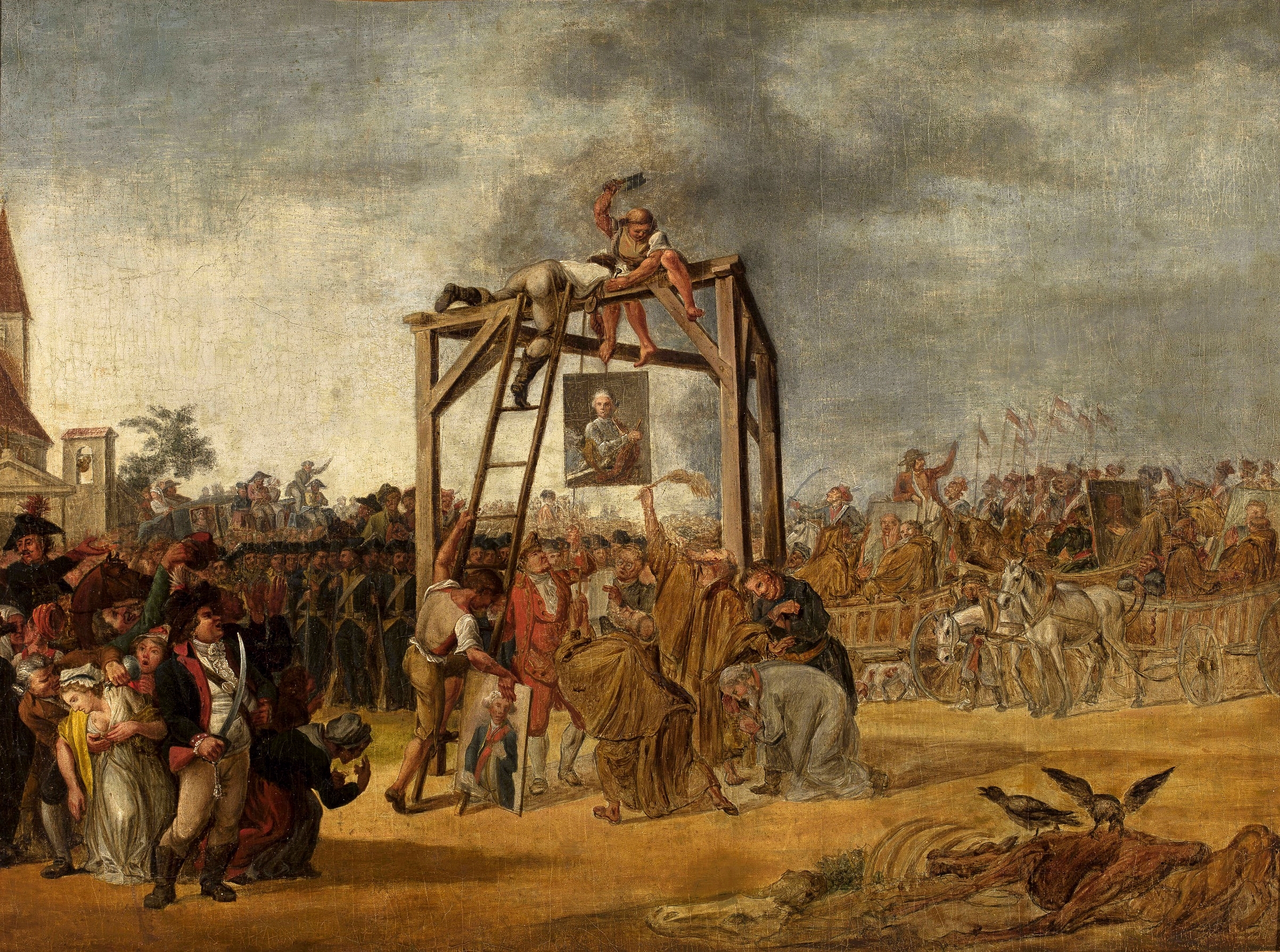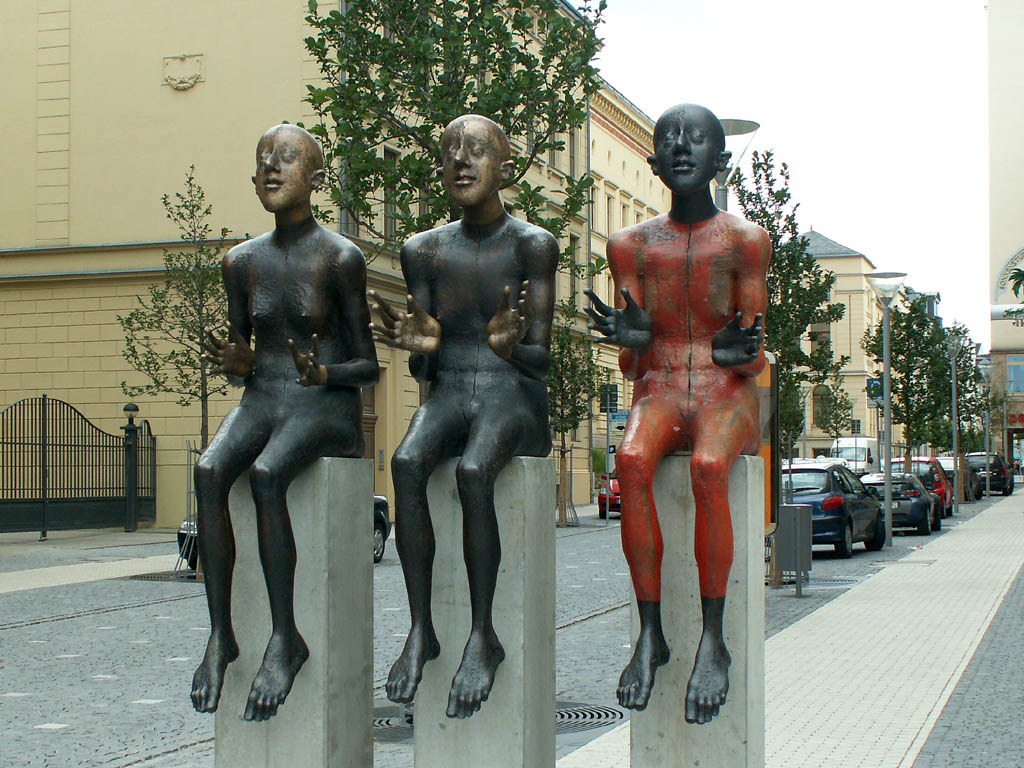|
Polish Enlightenment
The ideas of the Age of Enlightenment in Poland were developed later than in Western Europe, as the Polish bourgeoisie was weaker, and szlachta (nobility) culture (Sarmatism) together with the Polish–Lithuanian Commonwealth political system (Golden Liberty) were in deep crisis. The period of Polish Enlightenment began in the 1730s–40s, peaked in the reign of Poland's king, Stanisław August Poniatowski (second half of the 18th century), went into decline with the Third Partition of Poland (1795) – a national tragedy inspiring a short period of sentimental writing – and ended in 1822, replaced by Romanticism.Jerzy Snopek "The Polish Literature of the Enlightenment." (PDF 122 KB) ''Poland.pl.'' History Polish Enlightenment, while sharing many common qualities with the classical Enlightenment movements of Western Europe, also differed from them in many important aspects. Much of the thought of the Western Enlightenment evolved under the oppressive absolute monarchies and was ... [...More Info...] [...Related Items...] OR: [Wikipedia] [Google] [Baidu] |
Age Of Enlightenment
The Age of Enlightenment or the Enlightenment; german: Aufklärung, "Enlightenment"; it, L'Illuminismo, "Enlightenment"; pl, Oświecenie, "Enlightenment"; pt, Iluminismo, "Enlightenment"; es, La Ilustración, "Enlightenment" was an intellectual and philosophical movement that dominated Europe in the 17th century, 17th and 18th century, 18th centuries with global influences and effects. The Enlightenment included a range of ideas centered on the value of human happiness, the pursuit of knowledge obtained by means of rationalism, reason and empiricism, the evidence of the senses, and ideals such as liberty, progress, toleration, fraternity (philosophy), fraternity, and constitutional government. The Enlightenment was preceded by the Scientific Revolution and the work of Francis Bacon, John Locke, and others. Some date the beginning of the Enlightenment to the publication of René Descartes' ''Discourse on the Method'' in 1637, featuring his famous dictum, ''Cogito, ergo sum ... [...More Info...] [...Related Items...] OR: [Wikipedia] [Google] [Baidu] |
Polish King
Poland was ruled at various times either by dukes and princes (10th to 14th centuries) or by kings (11th to 18th centuries). During the latter period, a tradition of free election of monarchs made it a uniquely electable position in Europe (16th to 18th centuries). The first known Polish ruler is Duke Mieszko I, who adopted Christianity under the authority of Rome in the year 966. He was succeeded by his son, Bolesław I the Brave, who greatly expanded the boundaries of the Polish state and ruled as the first king in 1025. The following centuries gave rise to the mighty Piast dynasty, consisting of both kings such as Mieszko II Lambert, Przemysł II or Władysław I the Elbow-high and dukes like Bolesław III Wrymouth. The dynasty ceased to exist with the death of Casimir III the Great in 1370. In the same year, the Capetian House of Anjou became the ruling house with Louis I as king of both Poland and Hungary. His daughter, Jadwiga, later married Jogaila, the pagan Grand Duke of ... [...More Info...] [...Related Items...] OR: [Wikipedia] [Google] [Baidu] |
Polish Culture
The culture of Poland ( pl, Kultura Polski ) is the product of its geography and distinct historical evolution, which is closely connected to an intricate thousand-year history. Polish culture forms an important part of western civilization and the western world, with significant contributions to art, music, philosophy, mathematics, science, politics and literature. Its unique character developed as a result of its geography at the confluence of various European regions. It is theorised and speculated that ethnic Poles and the other Lechites ( Kashubians and Silesians) are the combination of descendants of West Slavs and people indigenous to the region including Celts, Balts and Germanic tribes which were gradually Polonized after Poland's Christianization by the Catholic Church in the 10th century. Over time Polish culture has been profoundly influenced by its interweaving ties with the Germanic, Baltic, Latinate and to a lesser extent; Byzantine and Ottoman cultures as ... [...More Info...] [...Related Items...] OR: [Wikipedia] [Google] [Baidu] |
Partitions Of Poland
The Partitions of Poland were three partitions of the Polish–Lithuanian Commonwealth that took place toward the end of the 18th century and ended the existence of the state, resulting in the elimination of sovereign Poland and Lithuania for 123 years. The partitions were conducted by the Habsburg monarchy, the Kingdom of Prussia, and the Russian Empire, which divided up the Commonwealth lands among themselves progressively in the process of territorial seizures and annexations. The First Partition was decided on August 5, 1772 after the Bar Confederation lost the war with Russia. The Second Partition occurred in the aftermath of the Polish–Russian War of 1792 and the Targowica Confederation of 1792 when Russian and Prussian troops entered the Commonwealth and the partition treaty was signed during the Grodno Sejm on January 23, 1793 (without Austria). The Third Partition took place on October 24, 1795, in reaction to the unsuccessful Polish Kościuszko Uprising the pr ... [...More Info...] [...Related Items...] OR: [Wikipedia] [Google] [Baidu] |
Targowica Confederation
The Targowica Confederation ( pl, konfederacja targowicka, , lt, Targovicos konfederacija) was a confederation established by Polish and Lithuanian magnates on 27 April 1792, in Saint Petersburg, with the backing of the Russian Empress Catherine II. The confederation opposed the Constitution of 3 May 1791 and fought in the Polish–Russian War of 1792, which led to the Second and Third Partitions of Poland. History The Targowica confederation opposed the Constitution of 3 May 1791, which had been adopted by the Great Sejm, especially the provisions limiting the privileges of the nobility. The text of the founding act of the confederation was drafted by the Russian general Vasili Stepanovich Popov, Chief of Staff of Prince Grigori Alexandrovich Potemkin. Its purpose was proclaimed in the small town of Targowica and the Potocki's estate (now in Holovanivsk Raion in Kirovohrad Oblast, Ukraine) on May 14, 1792. Four days later two Russian armies invaded the Polish-Lithuanian ... [...More Info...] [...Related Items...] OR: [Wikipedia] [Google] [Baidu] |
Civil War
A civil war or intrastate war is a war between organized groups within the same state (or country). The aim of one side may be to take control of the country or a region, to achieve independence for a region, or to change government policies. James Fearon"Iraq's Civil War" in '' Foreign Affairs'', March/April 2007. For further discussion on civil war classification, see the section "Formal classification". The term is a calque of Latin '' bellum civile'' which was used to refer to the various civil wars of the Roman Republic in the 1st century BC. Most modern civil wars involve intervention by outside powers. According to Patrick M. Regan in his book ''Civil Wars and Foreign Powers'' (2000) about two thirds of the 138 intrastate conflicts between the end of World War II and 2000 saw international intervention, with the United States intervening in 35 of these conflicts. A civil war is a high-intensity conflict, often involving regular armed forces, that is sustained, or ... [...More Info...] [...Related Items...] OR: [Wikipedia] [Google] [Baidu] |
Reform Movement
A reform movement or reformism is a type of social movement that aims to bring a social or also a political system closer to the community's ideal. A reform movement is distinguished from more radical social movements such as revolutionary movements which reject those old ideals, in that the ideas are often grounded in liberalism, although they may be rooted in socialist (specifically, social democratic) or religious concepts. Some rely on personal transformation; others rely on small collectives, such as Mahatma Gandhi's spinning wheel and the self-sustaining village economy, as a mode of social change. Reactionary movements, which can arise against any of these, attempt to put things back the way they were before any successes the new reform movement(s) enjoyed, or to prevent any such successes. United Kingdom After two decades of intensely conservative rule, the logjam broke in the late 1820s with the repeal of obsolete restrictions on Nonconformists, followed by the ... [...More Info...] [...Related Items...] OR: [Wikipedia] [Google] [Baidu] |
Constitutional Monarchy
A constitutional monarchy, parliamentary monarchy, or democratic monarchy is a form of monarchy in which the monarch exercises their authority in accordance with a constitution and is not alone in decision making. Constitutional monarchies differ from absolute monarchies (in which a monarch is the only decision-maker) in that they are bound to exercise powers and authorities within limits prescribed by an established legal framework. Constitutional monarchies range from countries such as Liechtenstein, Monaco, Morocco, Jordan, Kuwait, and Bahrain, where the constitution grants substantial discretionary powers to the sovereign, to countries such as Australia, the United Kingdom, Canada, the Netherlands, Spain, Belgium, Sweden, Malaysia, Thailand, Cambodia, and Japan, where the monarch retains significantly less personal discretion in the exercise of their authority. ''Constitutional monarchy'' may refer to a system in which the monarch acts as a non-party political he ... [...More Info...] [...Related Items...] OR: [Wikipedia] [Google] [Baidu] |
Commission Of National Education
The Commission of National Education ( pl, Komisja Edukacji Narodowej, KEN; lt, Edukacinė komisija) was the central educational authority in the Polish–Lithuanian Commonwealth, created by the Sejm and King Stanisław II August on October 14, 1773. Because of its vast authority and autonomy, it is considered the first Ministry of Education in European history and an important achievement of the Polish Enlightenment. History Genesis The chief reason behind its creation was that in Poland and Lithuania, the Jesuits ran an extensive system of educational institutions. Although the Jesuit schools were fairly efficient and provided the Polish youth with a good education, they were also very conservative. In addition, in 1773 the Pope decided to close down the Jesuit order ( Dominus ac Redemptor). This threatened a complete breakdown of education in the Commonwealth. One of the first items on the parliamentary agenda of the Partition Sejm (1773–1775), which acceded to the ... [...More Info...] [...Related Items...] OR: [Wikipedia] [Google] [Baidu] |
Constitution Of May 3, 1791
The Constitution of 3 May 1791,; lt, Gegužės trečiosios konstitucija titled the Governance Act, was a constitution adopted by the Great Sejm ("Four-Year Sejm", meeting in 1788–1792) for the Polish–Lithuanian Commonwealth, a dual monarchy comprising the Crown of the Kingdom of Poland and the Grand Duchy of Lithuania. The Constitution was designed to correct the Commonwealth's political flaws. It had been preceded by a period of agitation for—and gradual introduction of—reforms, beginning with the Convocation Sejm of 1764 and the ensuing election that year of Stanisław August Poniatowski, the Commonwealth's last king. The Constitution sought to implement a more effective constitutional monarchy, introduced political equality between townspeople and nobility, and placed the peasants under the government's protection, mitigating the worst abuses of serfdom. It banned pernicious parliamentary institutions such as the '' liberum veto'', which had put the Sejm at the ... [...More Info...] [...Related Items...] OR: [Wikipedia] [Google] [Baidu] |
Religious Tolerance
Religious toleration may signify "no more than forbearance and the permission given by the adherents of a dominant religion for other religions to exist, even though the latter are looked on with disapproval as inferior, mistaken, or harmful". Historically, most incidents and writings pertaining to toleration involve the status of minority and dissenting viewpoints in relation to a dominant state religion. However, religion is also sociological, and the practice of toleration has always had a political aspect as well. An overview of the history of toleration and different cultures in which toleration has been practiced, and the ways in which such a paradoxical concept has developed into a guiding one, illuminates its contemporary use as political, social, religious, and ethnic, applying to LGBT individuals and other minorities, and other connected concepts such as human rights. In Antiquity Religious toleration has been described as a "remarkable feature" of the Achaemenid E ... [...More Info...] [...Related Items...] OR: [Wikipedia] [Google] [Baidu] |





.jpg)



